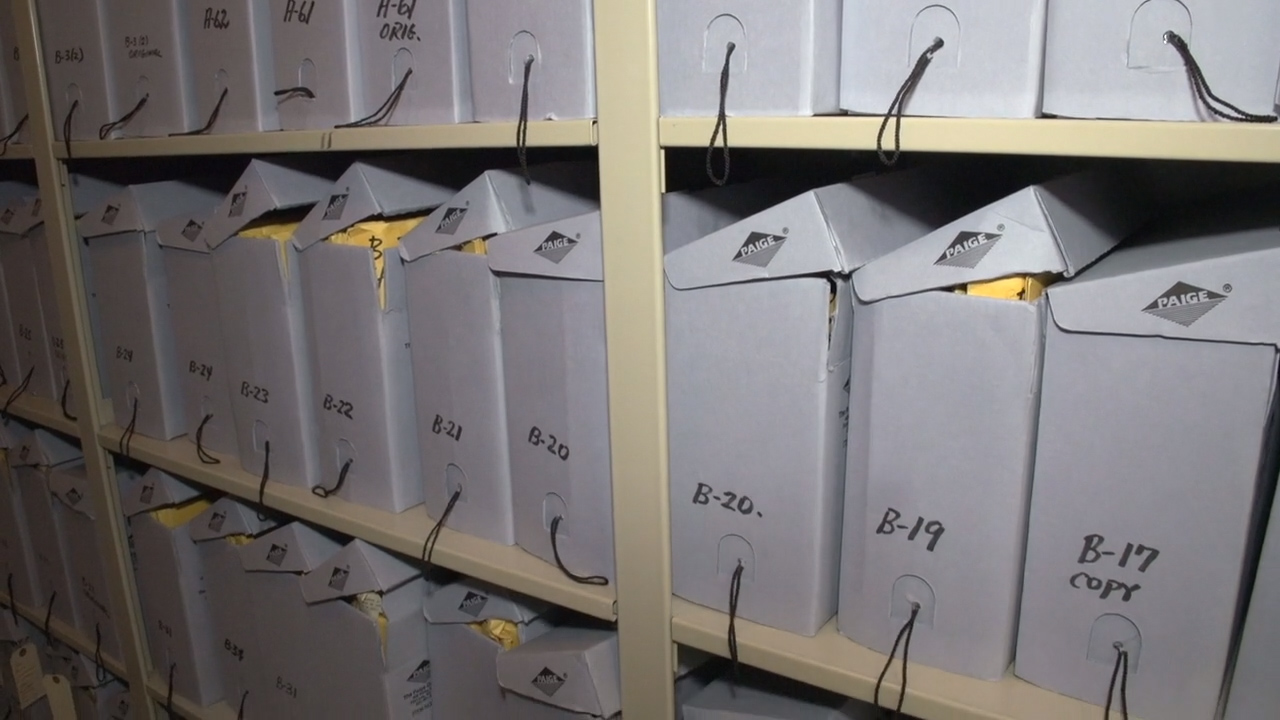- English
- Español
Media Center
Feature
The OAS Vault Safeguards the Legal Treasure of the Americas
September 30, 2015Surrounded by offices and warehouses, in one of the many buildings of Washington DC, lies the legal memory of the Americas. Protected by thick walls, behind a sturdy steel door inside a wall-to-wall, three-meter-long vault, are deposited the original copies of more than 150 multilateral legal instruments—treaties, conventions and protocols—that created some of the main institutions of the region, as well as hundreds of bilateral agreements, including:
- The Torrijos-Carter Treaties of 1977, giving Panama full sovereignty over the Canal, which had been under the control of the United States since its inauguration in 1914. The agreements were signed by President Jimmy Carter and General Omar Torrijos in the Hall of the Americas, at OAS headquarters, in the presence of several heads of state.
- The documents that established the Inter-American Court of Human Rights (CorteIDH), the Inter-American Development Bank (IDB), and the Pan American Health Organization (PAHO), among other institutions of the inter-American system.
- The OAS Charter, the Inter-American Convention on Human Rights (Pact of San José, Costa Rica), and the conventions against Corruption, Violence against Women, Racism, and on Disabilities, as well as the documents adopted within the framework of the inter-American conferences on private international law.
- The Pact of Bogotá on Pacific Settlement of Disputes, which recalls the obligation of states to settle disputes that arise among them “by regional pacific procedures before resorting to the Security Council of the United Nations.” The Pact, as it is known, also describes various pacific means for the solution of controversies: good offices and mediation; investigation and conciliation; legal proceedings, and arbitration.
Legal Memory of the Americas
The treaties and agreements, either bilateral or multilateral, contained in the safe are key tools in international diplomacy and conflict resolution. As a whole, they represent the legal memory of the Americas from 1889 up to the present time.
In his book, “The OAS and International Law,” OAS Secretary for Legal Affairs Jean Michel Arrighi divides the history of agreements in two periods that coincide with the existence of the Pan American Union (1889-1947) and then the OAS (1948-present).
During the first period, according to Arrighi, a “long list of agreements whose purpose was to ensure peace among American countries were reached.” “It is the time of Pan-Americanism, time of impulse, dreams of integration in Latin America, but also times of confrontation and distrust mainly between Latin American countries and the United States,” he says.
The period that begins in 1948, adds Arrighi, evolves “from pan-Americanism to inter-Americanism that brings together all independent countries of the Americas, and not for the ambitious achievement of a federation or union, but to reach, perhaps in a more modest fashion, instruments that enable better regional cooperation.”
Custodian of Laws and Visions of the Hemisphere
- Luis Toro Utillano, Principal Legal Adviser, Department of International Law, explains that the OAS formally became the depositary of legal instruments in 1948, both of original instruments as well as the status of signatures and ratifications. Previously, original texts were deposited in foreign affairs ministries.
- In 1929, the Pan American Union was given prerogatives in the deposit of binding legal instruments. However, similarly to the Convention that establishes it, texts were deposited in a member state, while the ratification instrument or accession took place in the Pan American Union, according to the decisions adopted by the American International Conferences,” says Toro Utillano.
- The vault—or safe—has for obvious reasons rectricted access with a code. The documents are kept in envelops that are placed in alkaline or neutral cardboard boxes to counteract acidity. The information is organized by the instrument’s alphabetical title, chronologically, and by State.
- If a document is adopted and opened for signature during a general assembly or a conference, countries can sign it right there. Subsequently, states will have to sign the instrument at OAS headquarters in Washington, D.C. In addition to signing the original document, a signature or ratification certificate, as appropriate, is prepared in two copies to ensure that each party has an original copy for its records.
- The signature does not require witnesses, but the OAS is generally represented by its Secretary General and its Assistant Secretary General. In addition, the Chair of the Permanent Council and the states already parties to the instrument being signed or ratified usually attend the ceremony.
- Full powers are required for signatures if the instrument is not signed by the head of state, head of government or foreign minister.
- The texts of all treaties and agreements kept in the OAS vault, as well as their current status of signature or ratification can be found at http://www.oas.org/en/topics/treaties_agreements.asp.
Reference: E-306/15



